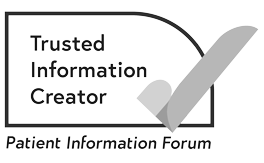Nutrition support and tube feeding with cancer
If you are not able to eat or drink enough and are losing weight, your doctors or dietitian may suggest you are fed through a tube for nutrition support. This may be called tube feeding.
What is tube feeding for nutrition support?
Cancer, or the effects of cancer treatments, can sometimes cause malnutrition and weight loss.
Malnutrition is when the body is not getting enough vitamins, minerals and nutrients, such as protein, to keep healthy and maintain weight. This may be because you have a reduced appetite or have symptoms such as difficulty swallowing or a sore mouth.
These problems may only happen for a short time. Making changes to your diet or adding nutritious drinks or supplements is sometimes all you need. But for some people, this will not be enough to keep to a healthy weight. If you cannot eat or drink enough to maintain your weight, your cancer doctors or dietitian may suggest having nutrition support through a feeding tube.
Nutrients through a feeding tube is called enteral nutrition (EN). This tube may go into the stomach or bowel.
You can also have nutrition support through a line into a vein (intravenous). This is called parenteral nutrition (PN).
This is usually a temporary way of having nutrition support. The length of time will vary depending on someone’s individual situation.
When is tube feeding used?
Tube feeding may be used if you:
- have difficulty swallowing or your mouth is sore
- are unable to eat or drink enough, and oral dietary supplements have not helped
- have lost a lot of weight (usually 10% or more of your body weight within the last 3 to 6 months) and dietary supplement drinks and other types of nutrition support have not helped
- are already underweight
- have problems with absorption
- have eaten little or nothing for several days and are not likely to eat enough or anything in the days that follow.
It can help you to:
- prevent weight loss
- put on weight
- feel less weak or tired
- get enough liquid
- reduce your worry about having to eat, for example, if you have problems swallowing or eating.
Types of tube feeding
There are 2 main types of tube feeding.
Enteral nutrition (EN)
Enteral nutrition (EN) is when nutritional fluid (or feed) is given through a tube going into the stomach or small bowel.
There are different ways of giving EN.
-
Nasogastric (NG) feeding tube
A thin tube is passed down the nose and into the stomach.
-
Nasojejunal (NJ) feeding tube
A thin tube is passed down the nose, into the stomach and into the jejunum, the middle part of the small bowel.
-
Percutaneous endoscopic gastrostomy (PEG) feeding tube
A tube is passed through the skin and muscle of the tummy (abdomen) into the stomach.
-
Percutaneous endoscopic jejunostomy (PEJ) feeding tube
A tube is passed through the skin and muscle of the tummy (abdomen) into the jejunum just below the stomach. The jejunum is the middle part of the small bowel.
-
Radiologically inserted gastrostomy (RIG) feeding tube
An x-ray is used to guide a tube through the skin and muscle of the tummy (abdomen) into the stomach.
Parenteral nutrition (PN)
Parenteral nutrition (PN) is when nutritional fluid goes directly into the bloodstream through a vein (intravenously).
It may be needed in either of the following situations:
- You cannot have nutritional fluid through your stomach or small bowel. For example, if you cannot have fluid this way because you had surgery to your small bowel, your bowel is blocked, or you are unable to absorb food.
- It is difficult to put in a tube for EN. For example, this can happen after some types of surgery to the head, neck or stomach.
Nutrition support at home
Some people can have parenteral or enteral nutrition at home. PN is more difficult to manage than EN. You may need to be referred to a specialist hospital to be shown how to manage the PN feeds.
The thought of having tube feeding at home may make you feel anxious. Before you are discharged from hospital, you will be shown how to manage your feeding system. If you have a carer, they will be shown too. You are usually given written instructions to help when you are at home.
You will not start tube feeding at home until you, and your carer if you have one, feel confident in dealing with the tube and the feeds.
A team of healthcare professionals will support you when you are home. The support offered to people may vary, but your GP, district nurse and dietitian can help.
NHS trusts often work in partnership with specialist home-care companies to make sure people who go home with tube feeding have the support they need.
Your feelings about tube feeding
Many people feel upset if they need a feeding tube for nutrition support. You may find having enteral feeding such as an NG tube or a PEG affects how you feel about your body image. These are all normal reactions.
If you need support to help you cope, talk to your dietitian or cancer specialist. You can also contact the Macmillan Support Line for free on 0808 808 0000.
We have more information about coping with your emotions.
About our information
This information has been written, revised and edited by Macmillan Cancer Support’s Cancer Information Development team. It has been reviewed by expert medical and health professionals and people living with cancer.
-
References
Below is a sample of the sources used in our information about nutritional support. If you would like more information about the sources we use, please contact us at informationproductionteam@macmillan.org.uk
National Institute for Health and Care Excellence NICE. Nutrition support for adults: oral nutrition support, enteral tube feeding and parenteral nutrition. Clinical guideline CG32. Last updated: 04 August 2017 Available from www.nice.org.uk/guidance/cg32 [accessed July 2025]
British Association for Parenteral and Enteral Nutrition BAPEN. Nutrition Support. Available from www.bapen.org.uk/education/nutrition-support [accessed July 2025]
British Dietetic Association BDA. The Use of Blended Diet with Enteral Feeding Tubes. Available from www.bda.uk.com/resource-report/the-use-of-blended-diet-with-enteral-feeding-tubes.html [accessed July 2025]
British Specialist Nutrition Association Ltd BSNA. Parenteral Nutrition. Available from bsna.co.uk/pages/about-specialist-nutrition/parenteral-nutrition [accessed July 2025]
European Society for Clinical Nutrition and Metabolism. ESPEN. Muscaritoli M, Arends J et al. ESPEN practical guideline: Clinical Nutrition in Cancer. Clinical Nutrition 40 (2021). 2898-2913. Available from www.espen.org/files/ESPEN-Guidelines/ESPEN-practical-guideline-clinical-nutrition-in-cancer.pdf [accessed July 2025]
Date reviewed

Our cancer information meets the PIF TICK quality mark.
This means it is easy to use, up-to-date and based on the latest evidence. Learn more about how we produce our information.
The language we use
We want everyone affected by cancer to feel our information is written for them.
We want our information to be as clear as possible. To do this, we try to:
- use plain English
- explain medical words
- use short sentences
- use illustrations to explain text
- structure the information clearly
- make sure important points are clear.
We use gender-inclusive language and talk to our readers as ‘you’ so that everyone feels included. Where clinically necessary we use the terms ‘men’ and ‘women’ or ‘male’ and ‘female’. For example, we do so when talking about parts of the body or mentioning statistics or research about who is affected.
You can read more about how we produce our information here.




